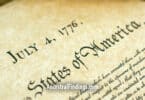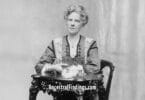Imagine driving through the rugged landscape of South Dakota, and suddenly, there it is—a colossal sculpture carved into the granite face of Mount Rushmore. Four of America’s most iconic presidents stand tall, forever etched into the mountainside: George Washington, Thomas Jefferson, Theodore Roosevelt, and Abraham Lincoln. But why were these four chosen to be immortalized in stone? Let’s journey through history and discover the reasons behind each selection.
George Washington: The Father of Our Country
First on the granite canvas is George Washington, the nation’s first president. Washington was more than a leader; he symbolized the new nation’s strength and unity. His leadership during the American Revolutionary War and his role in drafting the Constitution cemented his place as a founding father of the United States. Washington’s presidency set many precedents, including the two-term limit, which became a tradition for future presidents.
Washington’s presence on Mount Rushmore represents the birth of the United States. His steadfast commitment to the young republic and his ability to navigate the fledgling nation through its formative years made him a natural choice for sculptor Gutzon Borglum. In essence, Washington embodies the foundation upon which the nation was built.
Thomas Jefferson: The Visionary of Expansion
Next to Washington stands Thomas Jefferson, the third president of the United States and the principal author of the Declaration of Independence. Jefferson’s inclusion on Mount Rushmore highlights his vision and contributions to the expansion of the United States. One of his most notable achievements was the Louisiana Purchase in 1803, which doubled the size of the country and opened up vast tracts of land for exploration and settlement.
Jefferson was also a proponent of democracy and individual rights. His belief in the power of education and knowledge as tools for progress is reflected in his founding of the University of Virginia. Borglum chose Jefferson to symbolize the growth of the United States and the democratic ideals that underpin its government. Jefferson’s face on Mount Rushmore serves as a reminder of the importance of vision and innovation in the country’s history.
Theodore Roosevelt: The Champion of the Common Man
Theodore Roosevelt, the 26th president, is often remembered for his robust personality and progressive policies. His presence on Mount Rushmore represents the development of the United States into a modern nation. Roosevelt was a driving force behind the Progressive Era, advocating for reforms to address the challenges of industrialization and urbanization.
Roosevelt’s achievements include establishing national parks and forests, reflecting his deep commitment to conservation. His efforts to curb corporate monopolies and his role in negotiating the construction of the Panama Canal further showcased his belief in the United States’ potential on the global stage. Borglum saw Roosevelt as a symbol of progress and the American spirit of determination and adventure. Roosevelt’s dynamic leadership style and focus on the common good made him an essential figure on Mount Rushmore.
Abraham Lincoln: The Preserver of the Union
The quartet was completed by Abraham Lincoln, the 16th president, known for his leadership during the Civil War and his efforts to end slavery. Lincoln’s inclusion on Mount Rushmore is a testament to his dedication to preserving the Union and his belief in equality and justice. His issuance of the Emancipation Proclamation in 1863 marked a significant step towards ending slavery and redefining the nation’s ideals.
Lincoln’s ability to navigate the nation through its most turbulent times and his unwavering commitment to democracy and human rights made him a key figure in American history. Borglum chose Lincoln to represent the preservation of the United States, highlighting the importance of unity and resilience in the face of adversity. Lincoln’s face on Mount Rushmore is a powerful reminder of the values of freedom and equality.
The Artistic Vision of Gutzon Borglum
Gutzon Borglum, the mastermind behind Mount Rushmore, envisioned the monument as a celebration of the United States’ history and its most influential leaders. His goal was to create a monument that would inspire future generations and symbolize the principles that the nation was built upon. Borglum’s selection of Washington, Jefferson, Roosevelt, and Lincoln was not arbitrary; each president was chosen for their significant contributions to the country’s foundation, expansion, development, and preservation.
Borglum began work on Mount Rushmore in 1927, and despite numerous challenges, including funding shortages and harsh working conditions, the project was completed in 1941. The faces of these four presidents, each measuring about 60 feet in height, are a testament to the vision and determination of Borglum and his team of workers.
A Legacy Carved in Stone
Mount Rushmore is more than just a tourist attraction; it is a symbol of American ideals and the enduring legacy of its leaders. Each president’s face carved into the mountain represents a different era and a unique contribution to the nation’s story. Washington symbolizes the nation’s birth, Jefferson’s expansion, Roosevelt’s development, and Lincoln’s preservation.
Visiting Mount Rushmore is a journey through the history of the United States, a reminder of the challenges overcome and the progress made. The monument is a tribute to the visionaries who shaped the nation and the values that continue to guide it.
In the end, the faces on Mount Rushmore are not just stone; they are stories of leadership, vision, progress, and resilience. They remind us of the importance of strong leadership and the enduring principles of freedom and democracy. So, the next time you find yourself gazing at the majestic sculpture, take a moment to reflect on the incredible journey that led to the creation of this monumental tribute to American history.
Read More:
“Mount Rushmore: An Icon Reconsidered” by Jesse Larner
This book offers a critical look at the history and symbolism of Mount Rushmore, including the stories behind the presidents depicted on the monument.
“Great White Fathers: The Story of the Obsessive Quest to Create Mount Rushmore” by John Taliaferro
This well-researched book covers the history of Mount Rushmore, including the motivations and the people behind its creation.
“The Carving of Mount Rushmore” by Rex Alan Smith
A detailed account of Mount Rushmore’s design and construction provides insight into the engineering challenges and artistic decisions involved.
“Who Carved the Mountain?: The Story of Mount Rushmore” by Jean L. S. Patrick
A children’s book that tells the story of Mount Rushmore’s creation, focusing on the men who carved the monument.
“Mount Rushmore (Symbols of Freedom)” by Mary Dodson Wade
Another book aimed at younger readers explains the history and significance of Mount Rushmore.






